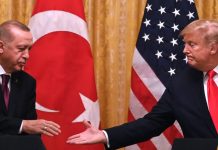Indian officials have indicated that China wants to revive good-old bilateral ties with New Delhi, which is the reason behind the swift disengagement by the People’s Liberation Army (PLA) in Pangong Tso in eastern Ladakh.
Why Modi Doesn’t Need Indian Diaspora’s Stamp Of Approval On His Policies
“Beijing’s decision to disengage from Pangong Tso starting on February 10 was not because its military positions were not tenable but to stop the downward spiral in bilateral relations since former Western Theatre Commander, General Zhao Zongqi, went on aggressive mode at Pangong Tso last May,” Indian daily Hindustan Times quoted a top Indian diplomat as saying.
Media reports suggest the disengagement is ahead of schedule in some positions. Officials have said the effort is to complete the Phase-1 of disengagement by February 20. As part of the disengagement process, China has dismantled military structures that were built in the Finger area (mountainous spurs), near the Pangong Tso.
According to the officials, the rapid disengagement also indicates that “the instructions have come from the highest level in Beijing”. A senior official has told Hindustan Times that China had made a lot of efforts to improve bilateral relations after the 1962 war. “Perhaps the disengagement is part of an effort to stem the rapid slide in bilateral ties,” the official said.
While India is keeping a close eye on the disengagement, the tenth round of corps commander-level talks on Gogra and Depsang will be held 48 hours after the disengagement is complete in Pangong Tso. The ongoing disengagement is based on a formal written agreement, which is being followed in every step.
Both sides have already withdrawn their tanks, howitzers, and heavy weapons from the south bank of the Pangong Tso-Kailash range in the Chushul sector. Thinning of troops in the area is taking place while over 30,000 troops remain deployed in Ladakh and Tibet.
The military stand-off, which had begun in May 2020, had resulted in New Delhi resorting to imposing tariffs on Chinese goods. Ever since the Galwan Valley clash on June 15, 2020, in which 20 Indian soldiers lost their lives, the Indian government has banned more than 100 Chinese apps on the pretext of national security.
Among other measures taken by India to thwart dependence on China are the Indian Railways canceling a Rs 471-crore deal with a Chinese firm. The state-owned telecom firm BSNL was instructed not to use gear from Chinese firm Huawei for a network upgrade in the backdrop of the military stand-off.
Besides, the government had made it compulsory for all products to have the ‘Country of Origin’ tag on the shopping websites in order to identify Chinese-made products.
India had also placed imports of color television sets under the restricted category, and air conditioners under the prohibited category. These were a few of the many measures taken by India following the military stand-off.
Chinese experts had criticized the Indian government for the moves but eventually, the souring of the relationship between the two countries was reflected when events scheduled to mark the 70 years of diplomatic relations between the neighboring countries were also called off.
Follow EurAsian Times on Google




